Themed collection Mechanistic processes in organometallic chemistry

Front cover
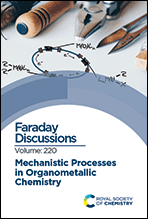
Back cover

Contents list
List of participants
Poster list
Concluding remarks for “Mechanistic Processes in Organometallic Chemistry”: the importance of a multidisciplinary approach
The Faraday Discussions meeting on Mechanistic Processes in Organometallic Chemistry was a brilliant occasion to assemble chemists from diverse sub-disciplines to discuss the progress and limitations of the study of reaction mechanisms using organometallic systems for stoichiometric or catalytic reactions.
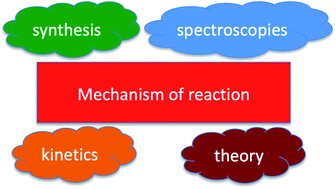
Faraday Discuss., 2019,220, 489-495
https://doi.org/10.1039/C9FD00101H
The effect of coordination of alkanes, Xe and CO2 (η1-OCO) on changes in spin state and reactivity in organometallic chemistry: a combined experimental and theoretical study of the photochemistry of CpMn(CO)3
A study is presented of ligand addition reactions of the fragment 3CpMn(CO)2 formed upon photolysis of CpMn(CO)3.
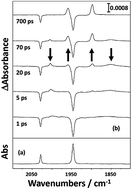
Faraday Discuss., 2019,220, 86-104
https://doi.org/10.1039/C9FD00067D
Platinum-mediated B–H methoxylation of bis(pyrazolyl)borate
Mechanistic investigations into the role of Pt(II) in mediating methoxylation of B–H fragments of bis(pyrazolyl)borate.

Faraday Discuss., 2019,220, 317-327
https://doi.org/10.1039/C9FD00052F
Physical insights into mechanistic processes in organometallic chemistry: an introduction
Mechanistic studies of late transition metal hydride homogeneous catalysts – 3d versus 4d metals.

Faraday Discuss., 2019,220, 10-27
https://doi.org/10.1039/C9FD00083F
Elucidating cation effects in homogeneously catalyzed formic acid dehydrogenation
In this work, we use density functional theory based molecular dynamics with an explicit description of methanol solvent to study the effect of cations on formic acid dehydrogenation catalyzed by a ruthenium PNP pincer complex (RuPNP).

Faraday Discuss., 2019,220, 404-413
https://doi.org/10.1039/C9FD00055K
Activation of tetrafluoropropenes by rhodium(I) germyl and silyl complexes
The activation of tetrafluoropropenes at rhodium silyl and germyl complexes revealed various reaction pathways such as the generation of organic derivatives of the substrate and a rhodium fluorido complex or the formation of rhodium vinyl complexes.

Faraday Discuss., 2019,220, 328-349
https://doi.org/10.1039/C9FD00059C
Catalyst design insights from modelling a titanium-catalyzed multicomponent reaction
Heteroleptic catalyst stability toward disproportionation was modelled based on ligand donor abilities, which is of critical importance in some catalyses.
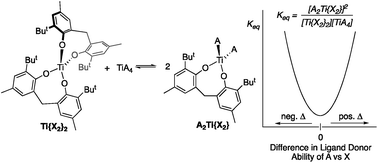
Faraday Discuss., 2019,220, 208-230
https://doi.org/10.1039/C9FD00033J
Direct dynamics analysis of the cationic Cp*(PMe3)Ir(CH3) methane C–H activation mechanism
Quasiclassical direct dynamics reveal a dynamical one-step organometallic mechanism for the σ-bond metathesis reaction between Cp*(PMe3)IrIII(CH3) and methane.
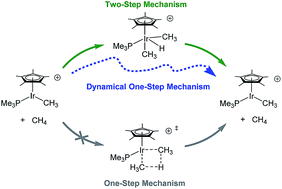
Faraday Discuss., 2019,220, 414-424
https://doi.org/10.1039/C9FD00035F
Hard X-ray spectroscopy: an exhaustive toolbox for mechanistic studies (?)
The hard X-ray spectroscopy methods XAS, valence-to-core XES and higher solution XANES offer unique insights into organometallic reaction mechanisms.
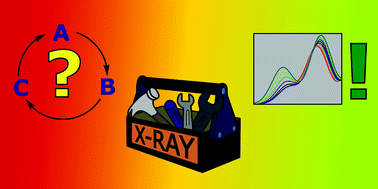
Faraday Discuss., 2019,220, 113-132
https://doi.org/10.1039/C9FD00070D
Isolation of a C3-metalated indolizine complex and a phosphonium ring-fused bicyclic metallafuran from the osmium-induced transformation of pyridine-tethered alkynes
Isolation of the C3-metalated indolizine and bicyclic osmafuran complexes revealed the intermediacy of metal–vinylidene species regarding [Os(dppm)2Cl]+-mediated alkyne transformations.

Faraday Discuss., 2019,220, 196-207
https://doi.org/10.1039/C9FD00048H
Kinetic analysis of bioorthogonal reaction mechanisms using Raman microscopy
Kinetic analysis of CuAAC and Glaser–Hay bioorthogonal reactions can be achieved with Raman microscopy using alkyne vibrations in the cell-silent region.

Faraday Discuss., 2019,220, 71-85
https://doi.org/10.1039/C9FD00057G
The electrostatic potential as a descriptor for the protonation propensity in automated exploration of reaction mechanisms
We discuss the possibility of exploiting local minima of the molecular electrostatic potential for locating protonation sites in molecules in a fully automated manner.
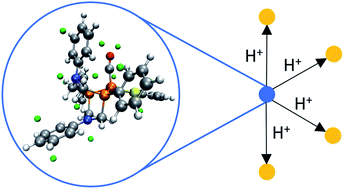
Faraday Discuss., 2019,220, 443-463
https://doi.org/10.1039/C9FD00061E
Towards measuring reactivity on micro-to-millisecond timescales with laser pump, NMR probe spectroscopy
We present a quantitative analysis of the timescales of reactivity that are accessible to a laser pump, NMR probe spectroscopy method using para-hydrogen induced polarisation (PHIP) and identify three kinetic regimes: fast, intermediate and slow.
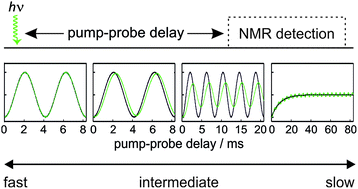
Faraday Discuss., 2019,220, 28-44
https://doi.org/10.1039/C9FD00039A
Insight into catalyst speciation and hydrogen co-evolution during enantioselective formic acid-driven transfer hydrogenation with bifunctional ruthenium complexes from multi-technique operando reaction monitoring
Operando spectroscopy shows a transition from dehydrogenation to hydrogen transfer during the reaction, and allows measuring optimal conditions for maximum rate and efficiency.
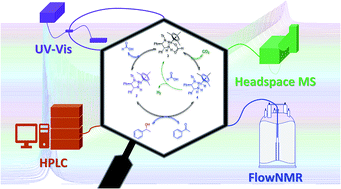
Faraday Discuss., 2019,220, 45-57
https://doi.org/10.1039/C9FD00060G
Revealing the reduction process of Cu(II) by sodium bis(trimethylsilyl)amide
Using XAS and EPR spectroscopy, we showed that sodium bis(trimethylsilyl)amide (NaHMDS) serving as an electron donor could reduce Cu(II) to an active Cu(I) species.
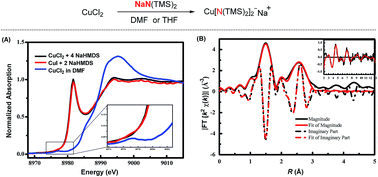
Faraday Discuss., 2019,220, 105-112
https://doi.org/10.1039/C9FD00034H
FBpin and its adducts and their role in catalytic borylations
Fluoride ion plays a dual role in both metal-catalysed and metal-free borylation reactions by activating B2pin2 and trapping Lewis acidic FBpin.

Faraday Discuss., 2019,220, 350-363
https://doi.org/10.1039/C9FD00053D
Suzuki–Miyaura coupling revisited: an integrated computational study
Computation is used to revisit the mechanism of the Suzuki–Miyaura coupling mechanism.
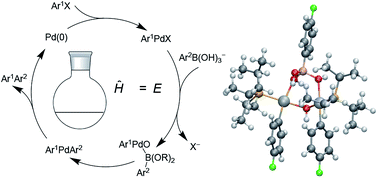
Faraday Discuss., 2019,220, 425-442
https://doi.org/10.1039/C9FD00051H
Direct experimental evaluation of ligand-induced backbonding in nickel metallacyclic complexes
The details of ligand-induced backbonding in nickel diphosphine π complexes are explored using nickel L-edge (3d←2p) X-ray absorption spectroscopy as a means of quantifying the degree of backbonding derived from direct Ni 3d donation into the π ligand.
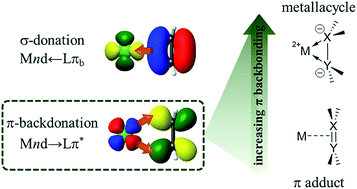
Faraday Discuss., 2019,220, 133-143
https://doi.org/10.1039/C9FD00041K
Benefit of a hemilabile ligand in deoxygenation of fatty acids to 1-alkenes
DFT calculations show how the hemilability of DPEphos facilitates the Pd-DPEphos-catalysed decarbonylative dehydration of fatty acids to α-olefins.
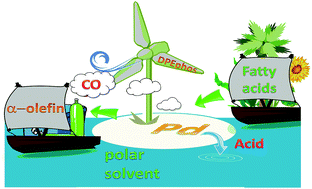
Faraday Discuss., 2019,220, 231-248
https://doi.org/10.1039/C9FD00037B
Bambusurils as a mechanistic tool for probing anion effects
We present bambusurils, macrocycles which strongly bind anions of different sizes, as a mechanistic tool to probe counter ion effects in metal catalysis.
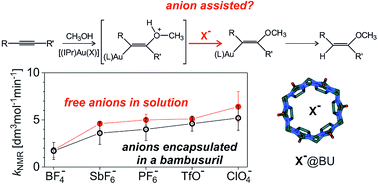
Faraday Discuss., 2019,220, 58-70
https://doi.org/10.1039/C9FD00038K
Understanding electronic effects on carboxylate-assisted C–H activation at ruthenium: the importance of kinetic and thermodynamic control
C–H activation processes may show contradictory substituent effects depending on the reaction conditions: under kinetic control ligands with electron-releasing substituents are favoured, whereas the opposite trend is seen under thermodynamic control.

Faraday Discuss., 2019,220, 386-403
https://doi.org/10.1039/C9FD00063A
Investigations into the mechanism of copper-mediated Glaser–Hay couplings using electrochemical techniques
Electrochemical control has been utilised to facilitate the generation and identification of a Cu(I) complex (‘Jagner’s complex’) capable of promoting Glaser–Hay coupling reactions.

Faraday Discuss., 2019,220, 269-281
https://doi.org/10.1039/C9FD00031C
Kinetics of initiation of the third generation Grubbs metathesis catalyst: convergent associative and dissociative pathways
The monopyridyl form of the Grubbs III catalyst initiates rapidly, via both dissociative and associative pathways.
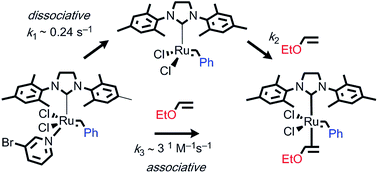
Faraday Discuss., 2019,220, 179-195
https://doi.org/10.1039/C9FD00043G
Metal–ligand cooperative C–O bond cleavage of propargylic alcohol with protic pyrazole complexes of ruthenium
Protic pyrazole–ruthenium complexes promoted the C–O and C–H bond cleavage of a propargylic alcohol through metal–ligand cooperation.
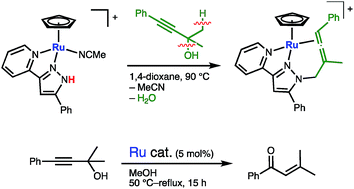
Faraday Discuss., 2019,220, 364-375
https://doi.org/10.1039/C9FD00040B
Diruthenium complexes having a partially hydrogenated bipyridine ligand: plausible mechanism for the dehydrogenative coupling of pyridines at a diruthenium site
Diruthenium complexes containing a partially hydrogenated bipyridine ligand are synthesized, which undergo dehydrogenation leading to the elimination of bipyridine.
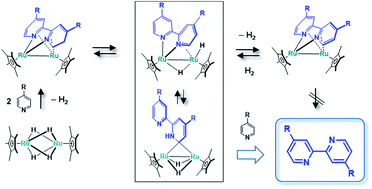
Faraday Discuss., 2019,220, 249-268
https://doi.org/10.1039/C9FD00029A
Computational and theoretical approaches for mechanistic understanding: general discussion
Faraday Discuss., 2019,220, 464-488
https://doi.org/10.1039/C9FD90073J
Physical methods for mechanistic understanding: general discussion
Faraday Discuss., 2019,220, 144-178
https://doi.org/10.1039/C9FD90070E
Understanding unusual element-element bond formation and activation: general discussion
Faraday Discuss., 2019,220, 376-385
https://doi.org/10.1039/C9FD90071C
Mechanistic insight into organic and industrial transformations: general discussion
Faraday Discuss., 2019,220, 282-316
https://doi.org/10.1039/C9FD90072A
About this collection
We are delighted to share with you a selection of the papers which will be presented at our Faraday Discussion on Mechanistic processes in organometallic chemistry taking place in York, UK in September 2019. More information about the event may be found here: http://rsc.li/organometallic-fd2019. Additional articles will be added to the collection as they are published. The final versions of all the articles presented and a record of the live discussions will be published after the event.
Organometallic chemistry underpins the majority of homogeneous catalysis, which is used in a range of areas from the multi-tonne-scale synthesis of polymers to the discovery and preparation of high-value molecules such as pharmaceuticals and agrochemicals. The development and/or optimisation of many of these catalytic applications crucially depends on the discovery and understanding of mechanistic processes in organometallic chemistry. As such, mechanistic investigations have played a key role in the field of organometallic chemistry since its early days. The recent and rapid growth in transition-metal catalysed organic reactions, where fundamental mechanistic insight is frequently lagging behind synthetic developments, emphasises their contemporary importance. In addition, there have been many significant developments recently in the physical methods that can be used to gain mechanistic understanding in organometallic chemistry (e.g. NMR spectroscopic developments such as new hyperpolarisation techniques, in-situ IR for reaction monitoring, novel methodologies for kinetic analysis and novel computational approaches).
The Discussion will provide a focussed meeting on mechanistic studies coupled with novel experimental and computational methods that will bring together experts with a wide range of interests and backgrounds, including those developing new physical methods for mechanistic investigations and potential end users of these methods.